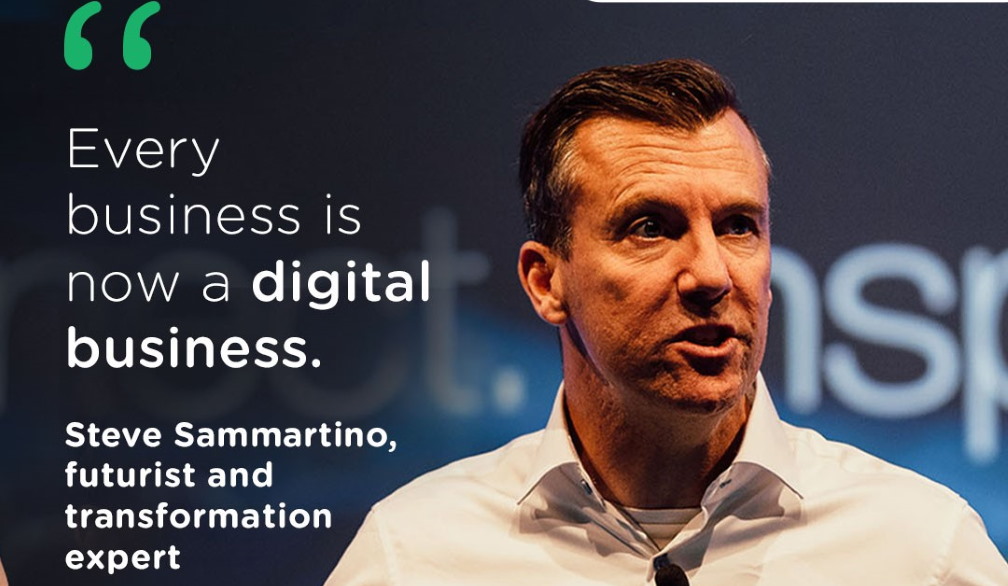Five trends shaping the future of digital connectivity
- Written by Futurist Steve Sammartino

Futurist Steve Sammartino revealed five emerging tech trends expected to shape the future of work.
This past year forced incredible change on businesses in a short time, with organisations needing to adapt and pivot quickly to keep pace.
This forced adaptation accelerated many current trends – some by three to five years, according to a global McKinsey executive study – while simultaneously causing new ones to emerge.
In a recent nbn webinar ‘Digital Transformation in a Post-COVID Economy’, Australian futurist and technologist Steve Sammartino revealed his picks for the emerging trends expected to shape the world of work in coming months and years, as well as the role digital connectivity will play in helping Australian businesses thrive in this new era.
Trend 1: Decentralisation
Decentralisation was already occurring, but the pandemic has accelerated both its speed and acceptance within the business community, said Steve.
Relocating away from CBDs can bring benefits, including reduced operational costs thanks to cheaper real estate prices or access to new talent pools. On an individual level, benefits like reduced travel times can contribute to a happier and more productive workforce.
“We’ve got to remove this mentality that the city is where it’s all at,” said Steve.
Fortunately, this ‘regional renaissance’ is being enabled by a corresponding increase in digital network infrastructure that’s capable of supporting a more diverse and dispersed economy.
“[This shift] requires all forms of connectivity, and certainly connectivity that goes wide out into the networks right across Australia, not just city centric.”
Trend 2: Horizontalisation
As Steve said during the webinar: “Every business is now a digital business.”
One of the trends emerging from this is ‘horizontalisation’, which sees the integration of different business verticals through industries blending together and merging.
Think Uber moving into food delivery, Amazon into cloud services, and Apple and Facebook moving into payments.
Yet, COVID-19 took things further as many businesses rapidly transformed into digital operations.
“Now that the major factor of production for all industries is the ones and zeroes of digital information transfer, what it means is that the people we might compete against […] or the things that we can expand into are actually going sideways,” said Steve.
“This is where disruption essentially comes from. The one thing we need to think about is looking sideways and thinking about the horizontal impact of our business.”
Trend 3: Physical/digital integration
The boundaries between the physical and digital worlds are blurring more quickly as well, which Steve said has now spawned digital twins, or replicas of the physical world in the digital world.
“You can do it with a jet engine, a warehouse, a retail store, an office building…” said Steve.
Digital twins can provide many advantages, including giving businesses greater understanding and control over the cost and time frame for large-scale changes. Businesses can also achieve much better integrated live tracking and can de-risk large-scale changes to complex physical systems.
“As a business, what’s your digital twin strategy? And what type of infrastructure and data implications will you have and need to build your digital twins?”
Trend 4: Hybrid future of work
It’s the most talked about change brought about by the COVID-19 pandemic, and it ties in with the trend towards decentralisation.
With so many experiencing – and enjoying – working from home, and companies increasingly accepting it, the 9-5 office life has changed forever.
“This will be the end of the cubicle farm, and we’re going to see a hybrid future […] where it’s about doing work where it needs to be done,” said Steve.
From anecdotal evidence and research, it appears that the majority of Australians want to be able to work flexibly between home and the office in future.
To meet this growing expectation, businesses will need to think more about how they can build scalability into their operations at all levels to suit a more dynamic workforce.
This means flexible and modular physical spaces, and a robust, flexible digital network as well.
“It’s important that the information and data capacity for your employees isn’t just in your offices. Where are they? You need to be able to look after them where they are, not just in your location.”
Trend 5: Democratising supply chain opportunities
For some companies, carefully curated and secure supply chains were a point of competitive advantage. Then COVID-19 hit and threw things into disarray.
The trend of ‘re-shoring’ has accelerated as businesses began bringing high-value manufacturing closer to home.
Savvy companies are capitalising on this shift by using real-time data analytics and artificial intelligence to help them better predict demand and labour or materials requirements, supported by a strong digital backbone that allows quick changes and flexibility for growth.
This trend also builds on another in this list – physical/digital integration – and has helped to democratise opportunities.
“And think about having a COVID-safe supply chain,” said Steve.
“It’s the type of thinking that we need, where it can be almost an insurance policy, but also an efficiency gain simultaneously.”
Investing in the future of work
In closing, Steve urged businesses to take advantage of the fundamental changes and once-in-a-lifetime opportunities created by the pandemic.
Businesses can leverage this disruption to progress their digital transformation efforts and harness these emerging trends for their benefit.
To help make the most of opportunities for innovation, nbn is laying the digital backbone that can help support Australian businesses to meet the evolving needs of customers, stakeholders and employees.
Companies need to invest long-term and ensure their digital infrastructure meets their future needs, while giving them the flexibility to adapt quickly if things change.
“A crisis is a terrible thing to waste,” says Steve.
“What we have right now […] is the most open minds in the last hundred years. We can put new operation models in, new techniques, we can launch new products. So, if you’re waiting, don’t – go for it.”







